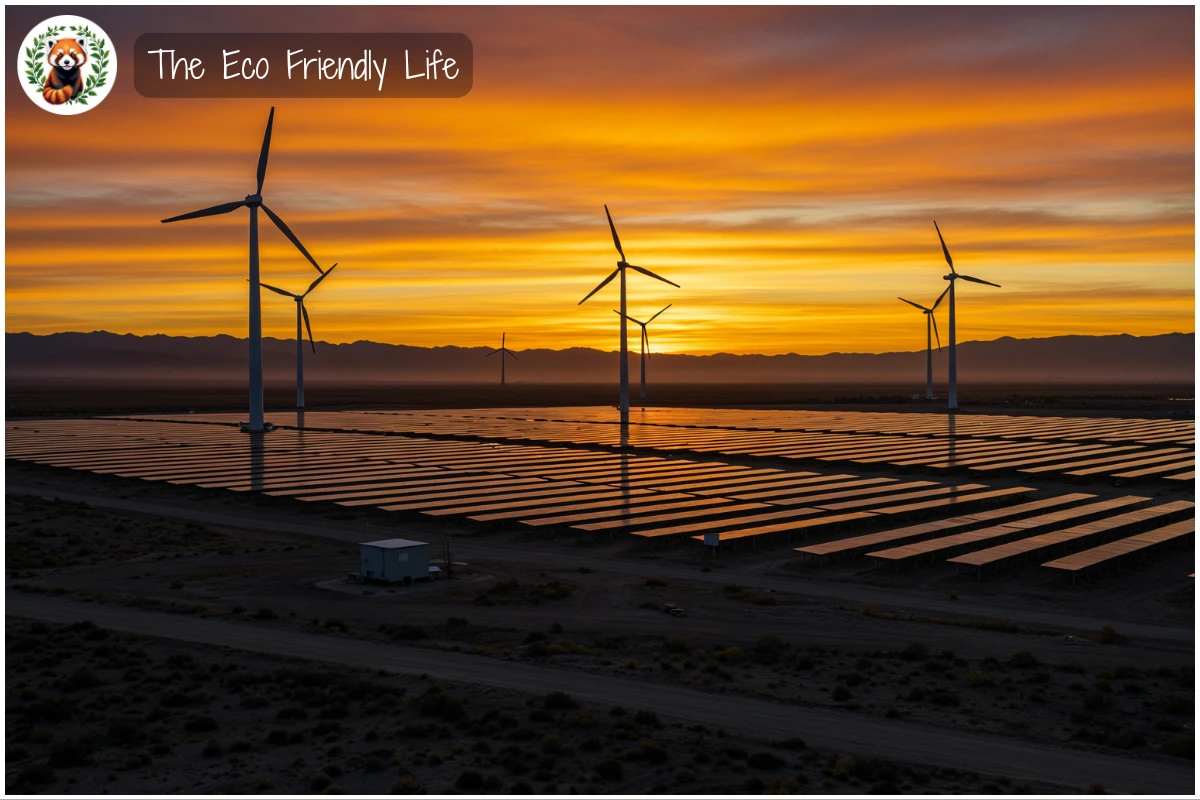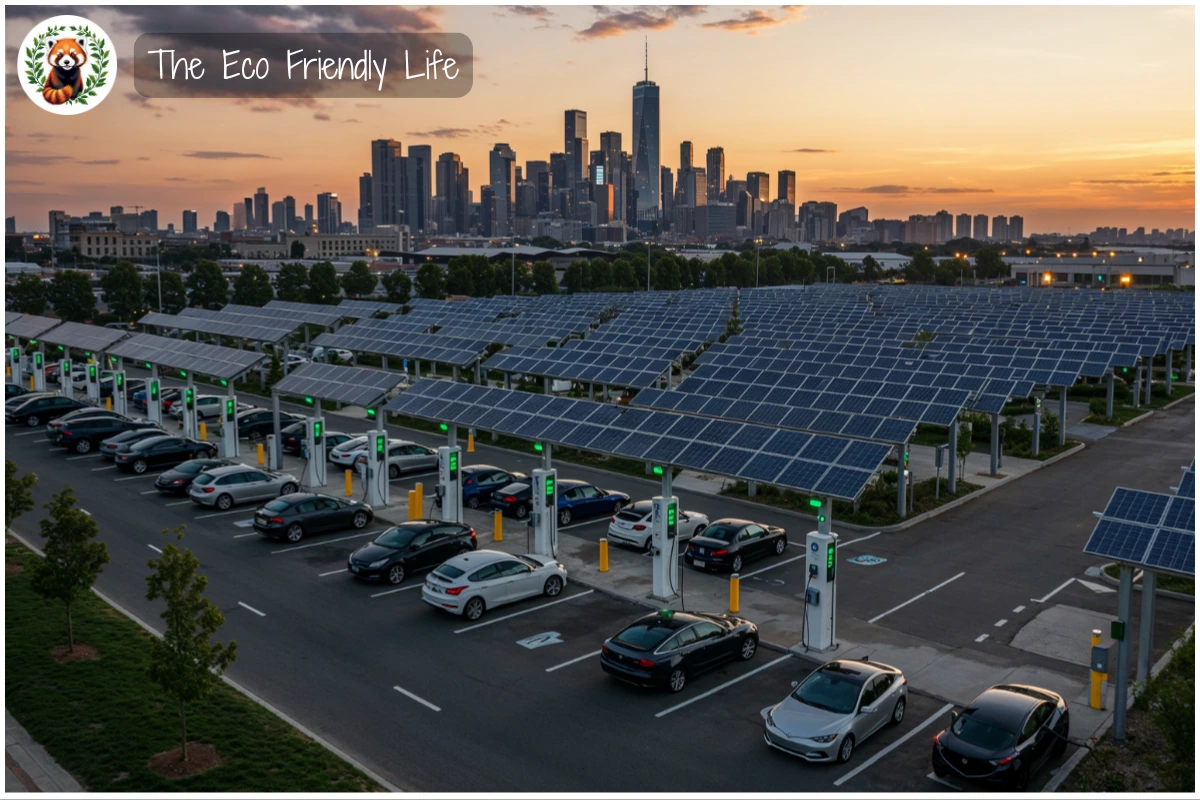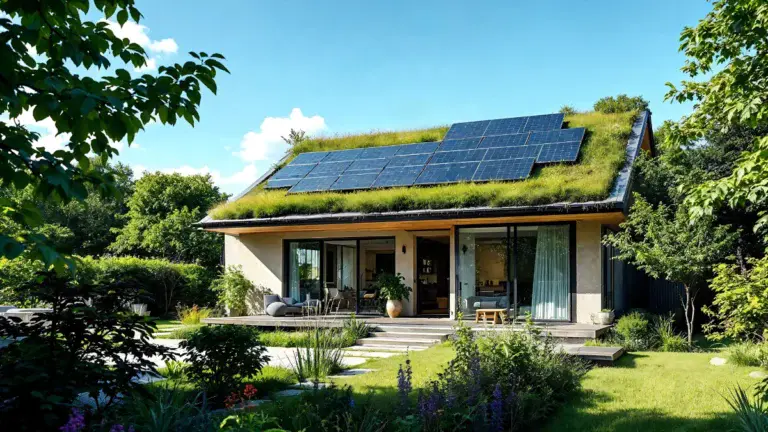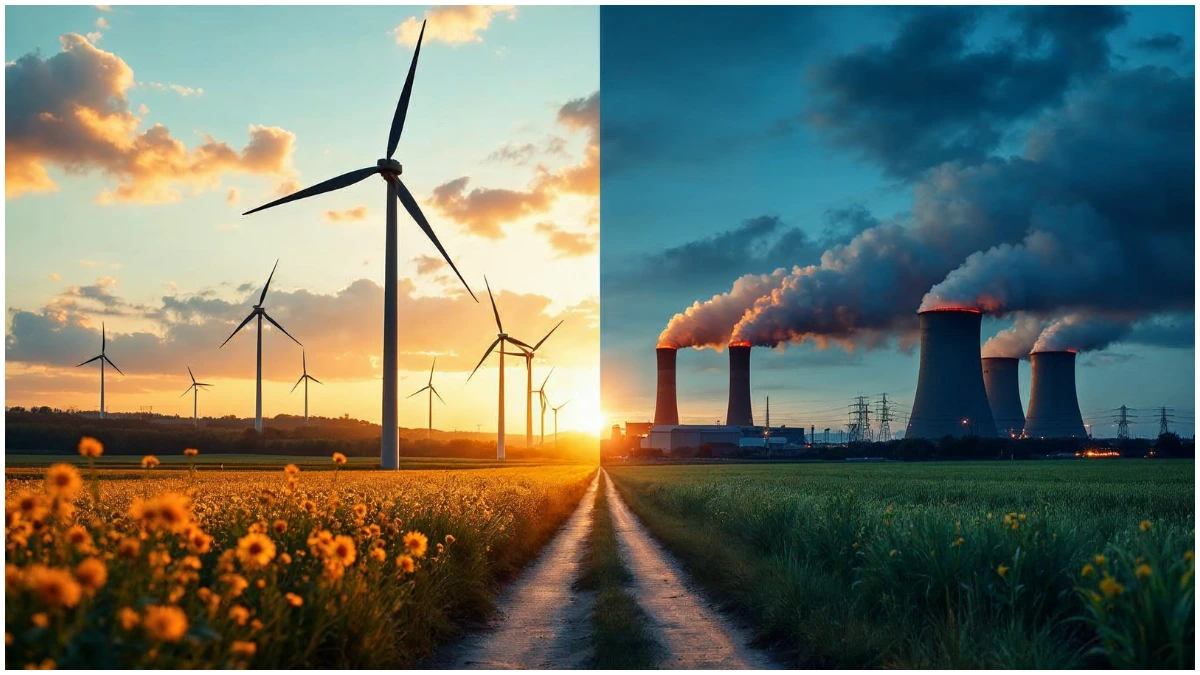Understanding the difference between renewable and non-renewable energy sources has become increasingly important as we face growing environmental challenges and rising energy costs. With clean energy now accounting for more than 40% of global electricity generation, consumers have more opportunities than ever to make informed choices about their energy consumption and contribute to a more sustainable future.
Hi there! I’m Al, and I’ve been passionate about sustainable living and energy solutions for over a decade. Through my journey from curious homeowner to energy efficiency advocate, I’ve discovered that understanding our energy options is the first step toward making meaningful changes in our daily lives. Whether you’re looking to reduce your carbon footprint, lower your energy bills, or simply understand the buzz around renewable energy, this comprehensive guide will equip you with the knowledge you need to make informed decisions. Let’s dive into the fascinating world of energy sources and discover how you can become part of the solution.
Understanding Renewable Energy Sources
Abundant and Inexhaustible Resources: Renewable energy comes from sources that naturally replenish themselves and won’t run out, unlike fossil fuels which are finite. The sun provides more energy to Earth’s surface in one hour than the planet uses in an entire year, making solar power one of the most abundant renewable resources available to us.

Solar Power Leading the Charge: Solar energy has become the fastest-growing renewable energy source globally, with global installations reaching a record 597 GW in 2024—a 33% surge over the previous year according to SolarPower Europe’s latest Global Market Outlook. Photovoltaic panels convert sunlight directly into electricity, while solar thermal systems use the sun’s heat for water heating and space heating applications. For homeowners, solar panels can significantly reduce electricity bills and provide energy independence.
Wind Energy’s Growing Impact: Wind power now generates 30% of the UK’s electricity supply, becoming the country’s leading source of electricity generation in 2024 according to the UK’s National Energy System Operator, and represents a major renewable electricity source in both the UK and the US. Both onshore and offshore wind farms capture kinetic energy from moving air using wind turbines, converting it into clean electricity. Offshore wind farms typically generate more power but require higher initial investments.
Hydroelectric Power’s Established Role: Hydroelectric power represents the most established renewable energy source globally, providing over 15% of the world’s electricity with 1,412 GW of installed capacity as reported by the International Hydropower Association, using flowing or falling water to drive turbines that generate electricity. From massive dam projects to small-scale micro-hydro systems, hydropower technology offers reliable, consistent energy generation. Tidal energy, a specialized form of hydropower, harnesses ocean movements to create predictable power generation cycles.
Geothermal and Biomass Options: Geothermal energy taps into the Earth’s internal heat for both electricity generation and direct heating applications, while biomass energy comes from organic materials like wood, agricultural residues, and dedicated energy crops. These sources provide consistent baseload power that complements variable renewable sources like solar and wind. Understanding these diverse renewable options helps consumers choose the most suitable technologies for their specific situations and locations.
Now that we’ve explored the promising world of renewable energy, let’s examine the traditional energy sources that still dominate our energy landscape and understand their limitations.
Non-Renewable Energy Sources and Their Limitations
Fossil Fuel Fundamentals: Non-renewable energy sources are finite resources formed over millions of years through natural geological processes that cannot be replaced within human timescales. Coal, oil, and natural gas make up the primary fossil fuels, each formed from ancient organic matter under specific conditions of heat and pressure. These energy sources have powered industrial development for centuries but come with significant environmental and supply limitations.
Coal’s Environmental Burden: Coal burning produces approximately 2.31 pounds (1.05 kg) of CO2 per kilowatt-hour of electricity generated, making it one of the most carbon-intensive energy sources. Coal mining operations cause severe environmental damage through habitat destruction, water pollution, and acid mine drainage that contaminates groundwater and surface water. Additionally, coal combustion releases sulfur emissions that damage vegetation and contribute to acid rain formation.

Oil’s Complex Supply Chain: Petroleum products generate about 2.46 pounds (1.12 kg) of CO2 per kWh of electricity produced, while also creating risks of catastrophic environmental disasters through oil spills. The extraction process has become increasingly expensive and environmentally challenging as easily accessible reserves become depleted, leading to deep-sea drilling and other high-risk extraction methods. Oil’s versatility in transportation and industrial applications has made global economies heavily dependent on its continued availability.
Natural Gas as a Transition Fuel: While natural gas produces approximately 50% less CO2 emissions than coal per kWh generated, it still contributes significantly to greenhouse gas emissions through both combustion and methane leaks during extraction and transport. Methane emissions have a global warming potential 84 times higher than CO2 over a 20-year period, making gas infrastructure leaks particularly concerning. Natural gas burns cleaner than other fossil fuels but remains a non-renewable resource with finite supplies, and pipeline methane leakage may be 3.75 to 8 times higher than EPA estimates.
Economic and Geopolitical Implications: Dependence on non-renewable energy sources creates economic volatility due to price fluctuations and supply chain disruptions, while also raising energy security concerns for import-dependent nations. The finite nature of these resources means that extraction costs generally increase over time as the most accessible deposits become exhausted. Understanding these limitations helps explain why the transition to renewable energy sources has become an economic necessity as well as an environmental imperative.
The stark differences between renewable and non-renewable energy sources become even more apparent when we examine their environmental impacts and carbon footprints.
Practical Daily Tips And Product Recommendations
| Tip | Description and Benefits |
|---|---|
| Switch to LED lighting | Replace incandescent bulbs with LED alternatives to reduce energy consumption by up to 80%. This simple change can significantly lower your electricity bill while reducing demand on the power grid. |
| Unplug electronics when not in use | Many devices consume “phantom power” even when turned off. Unplugging chargers, televisions, and other electronics prevents unnecessary energy waste and reduces your carbon footprint. |
| Use a programmable thermostat | Set your heating and cooling systems to operate only when needed. This optimization can reduce energy consumption by 10-15% without sacrificing comfort. |
| Choose energy-efficient appliances | Look for ENERGY STAR certified products when replacing household appliances. These devices use significantly less energy while providing the same functionality. |
| Maximize natural lighting | Open curtains and blinds during daylight hours to reduce dependence on artificial lighting. Strategic use of mirrors can help distribute natural light throughout your living spaces. |
| Air-dry clothes when possible | Skip the electric dryer and hang clothes outside or use indoor drying racks. This eliminates one of the most energy-intensive household activities. |
| Take shorter showers | Reducing shower time by just 2-3 minutes can save substantial amounts of hot water energy. Consider installing low-flow showerheads for additional savings. |
| Use cold water for washing | Most laundry detergents work effectively in cold water, eliminating the energy needed to heat water. This change can reduce your washing machine’s energy consumption by up to 90%. |
| Properly insulate your home | Check for air leaks around windows, doors, and other openings. Sealing these gaps helps maintain indoor temperatures more efficiently. |
| Consider renewable energy options | Research solar panel installations or green energy programs offered by your utility company. Even small-scale renewable energy adoption makes a meaningful difference. |
Our Product Recommendation for Adults
Jackery Explorer 1000 Portable Power Station
The Jackery Explorer 1000 v2 offers a perfect introduction to portable renewable energy with its 1070Wh capacity and compatibility with solar panel charging. This versatile power station provides backup power for emergencies while demonstrating how renewable energy can integrate into daily life.
Our Product Recommendation for Kids / Families
LuminAID Solar Light
For families seeking an educational and practical renewable energy experience, the LuminAID solar powered lantern provides up to 16 hours of LED lighting using only solar energy. This waterproof, inflatable device serves as both an emergency light source and a hands-on demonstration of solar power principles.
These practical applications of renewable energy technology lead us to examine the broader environmental implications of our energy choices.
Environmental Impact and Carbon Footprint Comparison
Dramatic Emissions Differences: The carbon footprint variations between energy sources are striking, with renewable technologies producing significantly lower lifetime emissions than fossil fuels. Solar panels generate approximately 41 grams of CO2 equivalent per kilowatt-hour according to comprehensive NREL lifecycle assessments, while coal-fired power plants produce between 820-1,050 grams per kWh based on the latest UNECE lifecycle analysis of electricity generation options. This means that solar electricity generates 20 times fewer emissions than coal and 12 times fewer than natural gas over their operational lifetimes.
Manufacturing and Lifecycle Considerations: While renewable energy technologies do have environmental impacts during manufacturing, these initial emissions are typically offset within the first 1-3 years of operation according to NREL’s comprehensive lifecycle greenhouse gas analysis. Solar panel production involves some toxic chemicals, and wind turbine manufacturing requires significant materials, but these impacts are minimal compared to the ongoing emissions from fossil fuel combustion. The key difference lies in the operational phase, where renewable sources produce clean energy for decades without ongoing emissions.
Air and Water Quality Benefits: Renewable energy sources eliminate the air pollutants that cause respiratory problems and acid rain, while also avoiding the water contamination associated with fossil fuel extraction and combustion. Coal mining creates acid mine drainage that pollutes groundwater and surface water for decades as documented by Global Energy Monitor’s water pollution analysis, while oil spills devastate marine ecosystems. Wind and solar installations have minimal impact on local air and water quality during operation.
Habitat and Biodiversity Impacts: Though renewable energy projects can affect local ecosystems, their impacts are generally far less severe than fossil fuel extraction operations. Coal mining destroys entire landscapes through mountaintop removal and strip mining as detailed in Global Energy Monitor’s mountaintop removal documentation, while oil drilling disrupts vast areas of natural habitat. Renewable installations typically have smaller footprints and can often coexist with agricultural or natural land uses.
Climate Change Mitigation: The transition to renewable energy sources represents our most effective strategy for reducing greenhouse gas emissions and limiting global temperature rise. Each kilowatt-hour of renewable electricity generated directly displaces fossil fuel-based generation, creating cumulative climate benefits over time. Understanding these environmental advantages helps consumers make informed decisions about their energy choices and support policies that accelerate the clean energy transition.
These environmental benefits become even more significant when we consider the broader transformation occurring in our global energy systems.
The Future of Energy and Making the Transition
Accelerating Global Transformation: The renewable energy sector is experiencing unprecedented growth, with several major milestones expected by 2030. In 2025, renewable electricity generation is projected to surpass coal-fired generation globally, while solar photovoltaic power is expected to become the largest renewable energy source by 2029, according to the IEA’s latest outlook. This rapid transformation is driven by declining costs and supportive policies implemented by governments worldwide, with solar surge analysis showing renewable capacity growing 2.7-fold by 2030.
Policy and Economic Drivers: Fiscal incentives and emissions trading systems have proven most effective at promoting renewable energy innovation, while feed-in tariffs and renewable energy quotas show varying effectiveness across different regions, as documented by policy effectiveness research. The combination of multiple policy approaches typically delivers better results than individual policies. creating comprehensive frameworks that support renewable energy deployment through fiscal instrument analysis. These policy measures are essential for creating market conditions that favor clean energy investments.
Community-Based Energy Solutions: Energy communities are emerging as powerful models for local renewable energy deployment, with participants achieving electricity cost savings of up to 42% through collective installations and energy sharing arrangements. These community energy projects demonstrate how individual actions can combine to create larger environmental and economic benefits through European energy studies. Residential prosumers with solar panels and battery storage can achieve individual self-sufficiency rates up to 54%, according to research on distributed energy systems.
Integration with Transportation: The convergence of renewable energy and electric vehicles represents a significant opportunity for reducing transportation emissions while creating new markets for clean electricity. Smart charging systems can help balance electrical grid demand while ensuring that electric vehicle adoption supports rather than strains renewable energy integration, as demonstrated in smart grid studies showing 73% increase in renewable usage. This synergy between clean transportation and renewable energy amplifies the environmental benefits of both technologies through EV grid integration.

Personal Action and Systemic Change: Individual energy choices contribute to market signals that drive further renewable energy development, creating a positive feedback loop between consumer behavior and investment. By adopting renewable energy technologies, supporting clean energy policies, and making conscious consumption choices, individuals can accelerate the broader energy transition through market driver interactions. The combination of personal action and systemic change creates the momentum needed to achieve global climate goals and energy security objectives, as demonstrated by behavioral transition research.
Understanding this transformation helps us recognize both the opportunities and responsibilities we have as energy consumers in shaping our sustainable future.
FAQs
How much can I realistically save by switching to renewable energy?
Depending on your location and energy usage, solar panels can reduce electricity bills by 50-90%, with typical payback periods of 6-10 years.
Are renewable energy sources reliable enough for everyday use?
Yes, when properly designed and integrated with storage systems, renewable energy can provide consistent, reliable power for homes and businesses.
What’s the biggest barrier to adopting renewable energy?
Initial installation costs remain the primary barrier, though financing options and government incentives are making renewable energy increasingly accessible.
Do renewable energy systems work in all climates?
Different renewable technologies suit different climates, with solar working well in sunny regions and wind power effective in areas with consistent breezes.
Organizations To Support – Our Recommendations
- Clean Energy Group – This nonprofit organization has distributed over $2 million to nearly 200 community organizations for resilient power projects, helping frontline communities access clean energy during emergencies. Support their work in building community energy resilience and providing backup power for vulnerable populations.
- SolarAid – Working to eliminate kerosene lighting across Africa by 2030, SolarAid creates sustainable markets for solar lights in rural communities. Their social enterprise SunnyMoney is Africa’s largest solar light seller, helping families access clean lighting solutions while reducing indoor air pollution and fire risks.
Resources And Further Reading
- International Energy Agency Renewable Energy Report – Comprehensive analysis of global renewable energy trends, policy developments, and future projections from the world’s leading energy authority. Access their detailed renewable energy analysis for authoritative data on clean energy deployment.
- National Grid Energy Explained Series – Clear, accessible explanations of different renewable energy technologies and their roles in modern electricity systems. Their renewable energy guide provides excellent technical background for understanding clean energy options.
- MDPI Sustainability Journal – Peer-reviewed research on renewable energy systems, zero-energy buildings, and sustainable technology implementation. Explore their renewable energy research for detailed technical analysis and case studies.
- BBC Bitesize Energy Resources Guide – Educational resource covering both renewable and non-renewable energy sources with clear explanations of advantages and disadvantages. Use their energy education materials for comprehensive background information.
Our Related Articles

Climate Change: Causes, Effects And Solutions
Climate change stands as one of the most pressing challenges of our time, affecting every aspect of life on Earth. From rising temperatures and extreme…
Read More
What Is A Sustainable Home?
In today’s rapidly changing environmental landscape, the concept of sustainable homes has moved from a niche interest to a critical component of our collective future….
Read MoreConclusion
The distinction between renewable and non-renewable energy sources represents one of the most critical choices facing our generation. While fossil fuels have powered human development for centuries, their environmental costs and finite nature make the transition to renewable energy both inevitable and urgent. From solar panels that generate electricity with 20 times fewer emissions than coal to wind farms that now power nearly 30% of electricity in some regions, renewable technologies offer proven, scalable solutions for our energy needs.
The path forward requires both individual action and collective commitment. Whether you start with simple energy efficiency measures, consider installing solar panels, or simply choose a renewable energy provider, every step contributes to the larger transformation. As we’ve seen, the renewable energy revolution is already underway, with clean sources set to dominate electricity generation within this decade.
What renewable energy step are you most excited to explore in your own life? Share your thoughts and experiences in the comments below – your insights might inspire others to join the clean energy movement!


